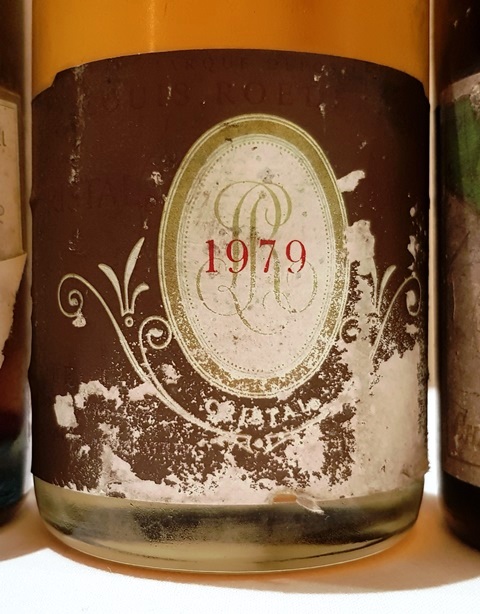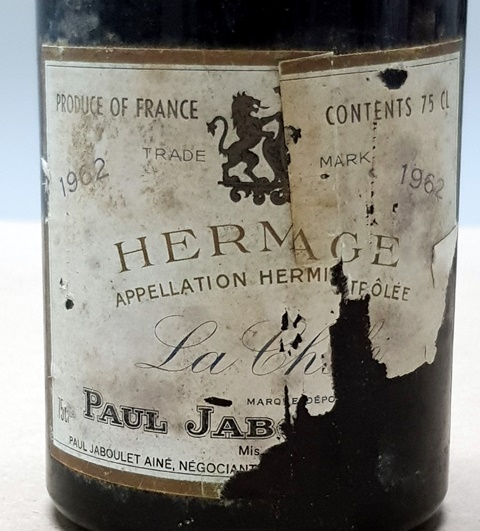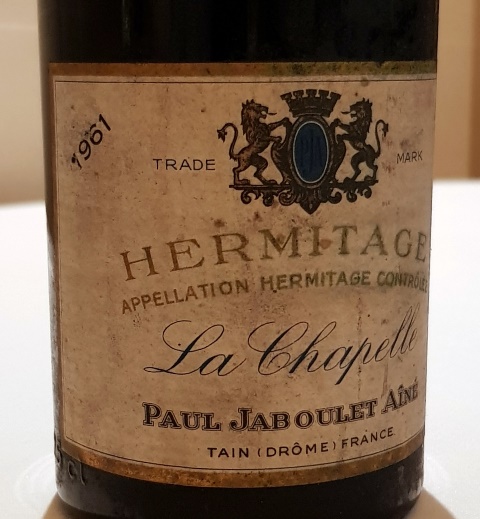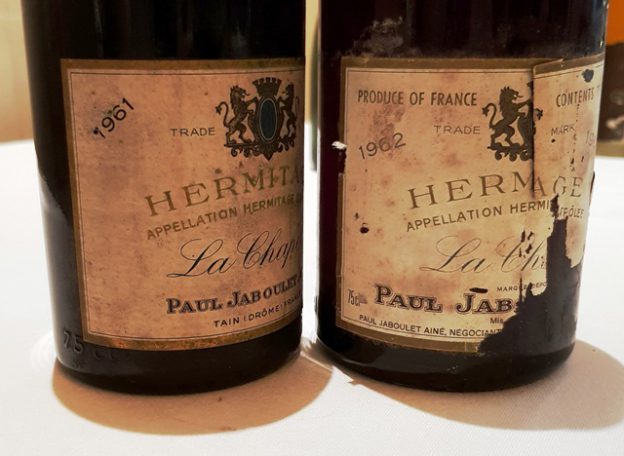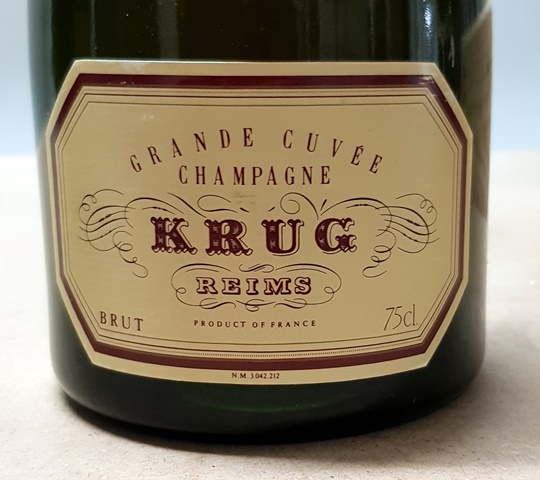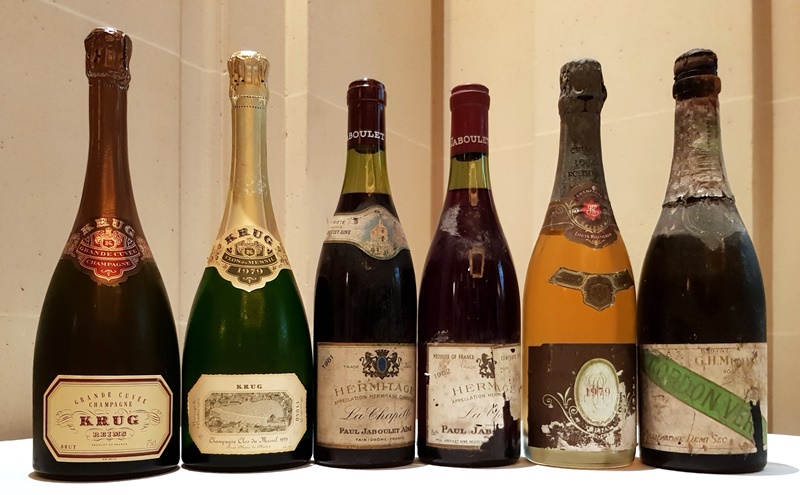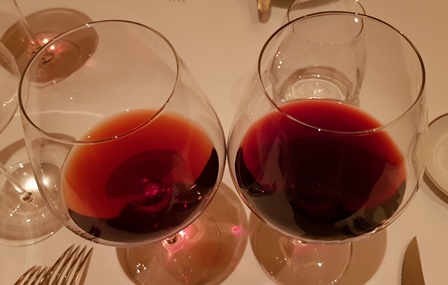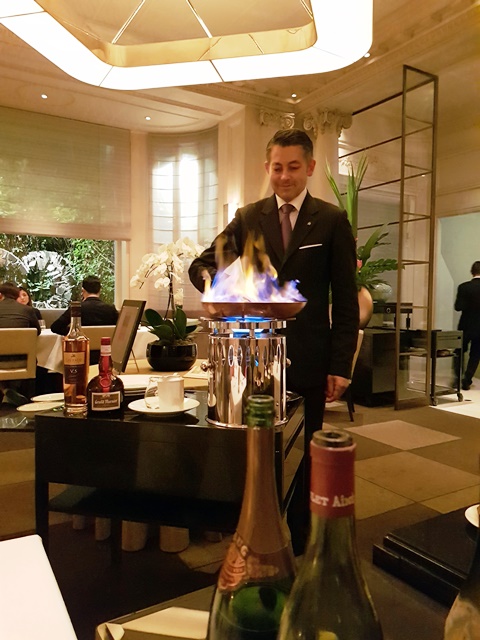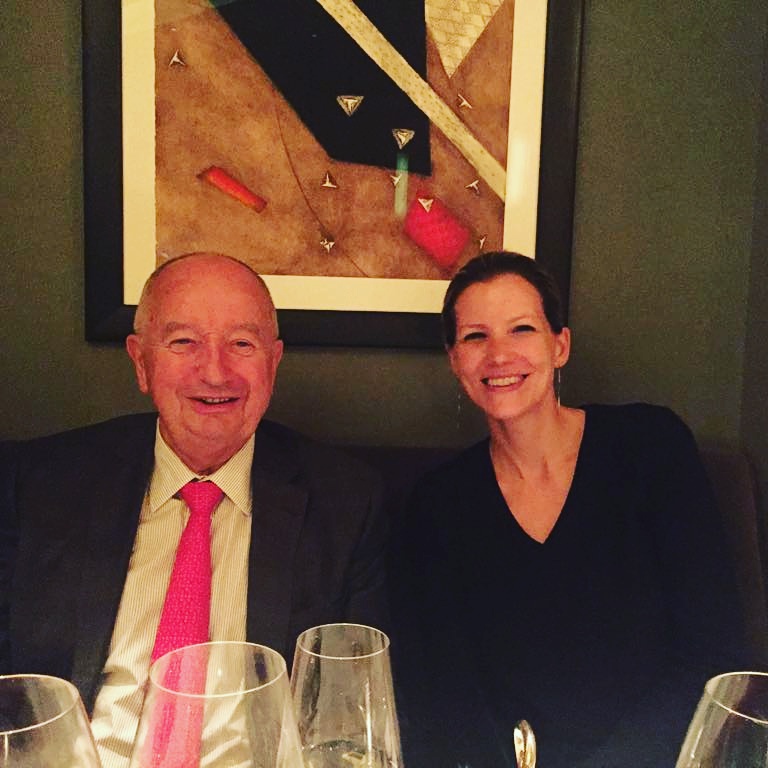The story of the dinner that will follow begins with a mail that offers me a mythical bottle, which is probably the greatest red wine I drank, Hermitage La Chapelle 1961. The price is such that normally I should not follow this offer. But on the other hand it seems unthinkable to let such a bottle pass without acquiring it. As for Les Gaudichots 1929 of the domaine de la Romanée Conti, I call my friend Tomo to ask him if he wants to share this madness. Tomo agrees. We each pay our half and it is Tomo who receives the bottle in his cellar.
An appointment is made to share this wine and as two “thieves” we will compete nicely to define our complementary supplements for dinner. Tomo announces a Krug Clos du Mesnil 1979 which is the first vintage of Clos du Mesnil by Krug, a splendid bottle. I announce my desire to open the Hermitage La Chapelle 1962 to compare it to 1961. We both know that we will not stop there. During the discussion Tomo tells me of his desire to open Hermitage La Chapelle in red and white for the 1959 vintage and he says: « If we were six, I could open these bottles. » Instantly I contact some friends by telling them that they could be of this dinner, without obligation of contribution. It is natural that the answers come very quickly and I inform Tomo who has changed his mind and prefers that we are alone. For friends, disappointment follows enthusiasm and the only person who will escape this go and return promise is my younger daughter.
So we are three for a dinner at the restaurant Taillevent. We will have a choice between six bottles, the two Hermitage La Chapelle 1961 and 1962, the Krug Clos du Mesnil 1979 to which Tomo added a 1979 Cristal Roederer, a Krug Grande Cuvée with the cream label I added and a Mumm Cordon Green Half-dry probably from the 40s that I also added. Tomo joined me in the restaurant at 5.30pm for the opening of the wines and we decided to remove the Cristal Roederer and the Mumm.
Both Hermitage La Chapelle have superb levels. The colors are extremely dissimilar, the 1962 is clear with shades of pink while the 1961 is black indicating a very rich wine. The corks show that the 1962 has its original cork while the 1961 was recorked at the domaine in 2010. The two perfumes are very dissimilar. The 1962 has a subtle Burgundy nose, with delicacy while the 1961 exhales notes of rich and powerful wine. For a long time I smell the wine to try to detect if at the time of recorking one could have completed the wine with younger additions. The absolute purity of perfume convinces me that this wine is of total integrity. At least that’s what I feel.
The opening session being very fast and my daughter having to join us at 7:30, the desire exists to deceive our loneliness by opening the Champagne Louis Roederer Cuvée Cristal 1979. The cork is very dirty and molds appeared around the cork on the top of the neck. I cleaned thoroughly and the cork broke allowing me to clean even better. The level in the bottle is low. The color of the champagne is beautiful, fairly clear. The nose is neutral. In the mouth, the wine is quite bitter, with an acidity that lacks a little balance. The observation is not brilliant. But over time the champagne improves and its bitter aspects are more coherent, the wine lengthens and its astringency becomes civilized to the point that I tell Tomo that I like his champagne. It has intonations of Vin Jaune but with a sparkling present and it reminds me of some characteristics of the champagne Selosse among which the Substance.
Then come gougeres that normally highlight the champagne but it is the reverse that occurs, the gougères highlighting the defects of this champagne more than its qualities. My daughter arrives and finds this Cristal rather nice. She loves its old champagne accents.
When the chef Alain Solivérès came to greet us, we quickly built the menu that Jean-Marie Ancher came to order in particular for the size of the portions he recommended in halves rather than whole. There will be: caviar and cress / spelled risotto with frogs’ legs / lobster / grouse.
The Champagne Krug Clos du Mesnil 1979 is a divine apparition. While the Cristal cork had produced no pschitt, the bubble of the Krug is of great vivacity. It is incredibly fine. The complexity of the champagne is stunning. There are saline notes, floral evocations but especially what fascinates me are the notes of red fruits jammed like the heart of a macaroon with red fruit. The fact that Chardonnay can evoke red fruits, is something special. The length is infinite, the directions of taste are all azimuths, we enjoy the absolute elite champagne. In a vertical of the Clos du Mesnil I had considered that the 1979 was the greatest. This one is even better than the best.
It combines well with the appetizers based on langoustine, preferring that the caviar is alone rather than with the watercress, and it gains in gluttony with the spelled risotto and the legs of frog.
The Hermitage La Chapelle Paul Jaboulet Aîné 1961 and the Hermitage La Chapelle Paul Jaboulet Aîné 1962 are served at the same time and in identical glasses so that the comparisons do not depend on the container. The colors are opposite, clairet and black ink, and nose too. The 1962 is very Burgundian, of a rare complexity. Everything in him is delicate and Tomo says he is feminine. The 1961 is rich, very rhodanian, with accents of truffle and small points of chocolate. The 1961 has the advantage of power, very masculine, while the 1962 is a courteous speech.
What is amusing is that the two wines go with two dishes, lobster and grouse, without it being possible to say that certain dish or part of the dish goes better with one wine. They print their mark on strong and tasty dishes without any exclusion. The lobster highlights refined notes while the grouse presented as terrine highlights the gluttony of the two wines.
With the 1961 of that day, I could enjoy the grandeur of an exceptional wine, but I did not experience the ecstasy of the previous bottle that gave me a physical emotion. The wine is tall, immense, infinite in length, but the spark of genius has not appeared and I would not put it on account of the filling in the domain.
Conversely, the 1962 is far above the 1962 that I already tasted during one of my dinners. And we agreed, my daughter, Tomo and me to say that the 1962 deserves in fact to have, of a hair, our preference because of its infinite delicacies.
At a neighboring table, the diners ordered flamed pancakes à la Grand Marnier. The mood being to enjoyment, we also command. Jean-Marie Ancher later told us that as soon as a table makes a command, envy spread like wildfire from table to table. What are we going to open with these pancakes, the Krug Grande Cuvée or the half-dry Mumm? This will be the Krug Grande Cuvée cream label that indicates a champagne thirty years or more.
We are blessed by the gods. Because the Krug is transcendental, offering a complexity almost as large as that of Clos du Mesnil, with a little more gluttony. And the echo he finds with pancakes is to be damned. It is absolute lust. I found red fruit evocations, more discreet than with the 1979, but equally charming.
At this late stage of the meal, we all look at each other and we are astonished to have had four perfectly perfect wines. The 1979 Krug is at the peak of the possible complexity of champagne. The two hermitages are at the top of the quality of red wine with decidedly different accents. And the Krug Grande Cuvée is at the very top of the aristocracy of champagne with an unparalleled gluttony and length.
Sowed by so much perfection, we promised ourselves that we would soon set the stage for new adventures.
